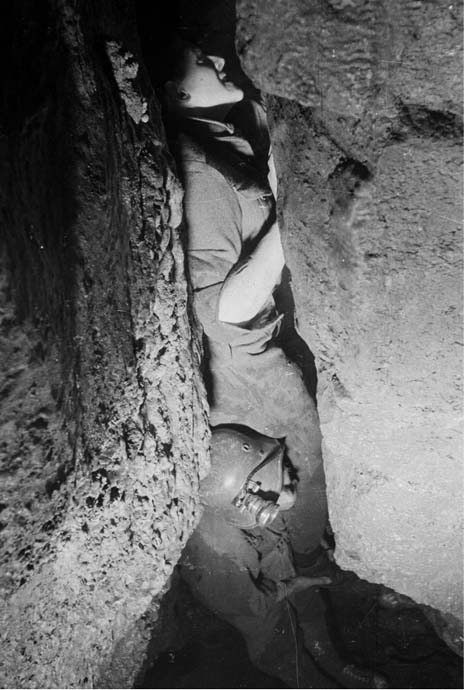Lyttelton's Britain (25 page)
Read Lyttelton's Britain Online
Authors: Iain Pattinson

K
INGSTON-UPON-HULL
is a fine city boasting an impressive history. The story of Hull is inextricably linked with the trawling industry, and Hull folk are often said to have fish in their blood, a condition that’s baffled medical experts for years.
The original name of Kingston-upon-Hull was ‘Sayercryk’, an old Norse term which experts have translated as ‘Kingston-upon-Hull’.
During the 7th Century, Angles and Saxons arrived in Hull, but the local Celts had them locked in holding centres, on the grounds they had blond hair, blue eyes and could speak only English.
King Edward I named the town in 1296, and shortly after, Kingston-upon-Hull received its first charter, when a party of retired newsagents from Scunthorpe was diverted on their way to Torremolinos.
During Tudor times, Hull’s customs levies on Humber shipping resulted in a feud with neighbouring Beverly. Eventually, the nuns at Beverly Convent rose in revolt and laid siege to Hull. This worried Henry VIII, who sent a heavily armed force immediately he heard the town was being terrorised by the Beverly Sisters.
During the 1840s, new trawling methods meant that large
numbers of herring were landed. These were sent along to the Hull Fisheries Preserving Sheds to be smoked by fishwives, as they found them a cheaper alternative to pipe tobacco.
During the 18th Century, the British Empire expanded and it was Hull that became the headquarters of the East India Company. It was from Hull in 1746, that Clive of India set sail for Calcutta, although in those days of course, he was known as ‘Clive of 26, Grimethorpe Street’.
The pioneering aviator, Amy Johnson, was born in Hull. In 1930, Amy set off on her epic solo flight to Australia with logistical support from Imperial Airways, the forerunner of BA. By the end of the first day, she’d had her lunch in Paris, her dinner in Nice and her luggage in Terminal Five. With the outbreak of war, Amy took to delivering aircraft for the RAF and often flew in Wellingtons, as their bombers were notoriously leaky.
At the start of World War II, many trawlers were converted as mine sweepers and it was Hull sailors who helped clear the way for Churchill’s Allied Landings, before he expanded next door as Allied Carpets.
The mighty Humber suspension bridge was opened by the Queen in 1981. Linking Willerby with Barton-upon-Humber, the structure was at that time the longest and most expensive single-span, concrete supported bridge in the world, that connects two places no one wants to go to.
Hull’s art museum houses a gallery of works by Hieronymus Bosch, where visitors can peruse his range of over-priced washing machines.
A famous name associated with Hull is that of Philip Larkin, who was a librarian at the university for thirty years. The famous
poet, jazz lover and collector of pornography died there in 1985, having contracted terminal tennis elbow.
Hull is famous for its Mystery Plays and regularly stages the story of Noah’s Ark. Each year there is great competition amongst Hull’s womenfolk to be chosen to play the part of his wife, Joan. However, proceedings were interrupted in 1997, when real animals from the town zoo were employed. Two giant pandas, ‘An An’ and ‘Ling Ling’, who hadn’t previously mated in 15 years, became over-excited and were visibly frustrated when they had to be separated by their keepers, ‘Git Git’ and ‘Bastard Bastard’.
In the 1960s, Hull became the birthplace of the discount trading warehouse, with the Comet chain starting there. Forty years on, Comet stores pride themselves that their staff can tell you everything they know about a product in under four seconds.
Former Deputy Prime Minister John Prescott is a local MP. In buying up ex-council accommodation, his family has worked tirelessly in Hull to improve the housing standards of his family. Never forgetting his working-class roots, Prescott has himself earned considerable praise for improving the lot of Hull’s many Jaguar dealerships.

Hull MP John Prescott with his bulimia counsellor

Y
ORK
is an ancient and picturesque city with a rich and varied history. The first known settlement there was during the Bronze Age and was called ‘Brigantia’, or literally ‘home of the Briganti tribe’, but when Quintus Petillius and his ninth legion arrived in 71
AD
, it became known as ‘Eboracum’, or literally, ‘Not any more, it isn’t’. When 300 years of occupation ended with the Roman Empire declining into a mire of drunken, orgiastic debauchery, the locals reclaimed their town and it was renamed ‘Eoforwic’, or literally, ‘Look at the state they’ve left this place in’.
Very soon the town was overrun by the invading Anglo-Saxons, and reverted to Celtic rule after King Arthur’s famous victory. This was shortlived, however, as Arthur fled south when a messenger arrived from Camelot with the urgent news that it was another bonus roll-over jackpot week.
By the 8th Century, York was capital of Northumbria, but during a succession of wars against the Vikings under Ivar the Boneless, the city fell several times, although not nearly as often as Ivar.
The Vikings were finally defeated in 1066 at Stamford Bridge, and with the subsequent arrival of the Normans, this pattern of history established the old centre of York much as we see it today: repeatedly overrun by foreigners.
The name ‘York’ has of course been adapted in many ways. There’s the ‘Yorkie’, the staple diet of lorry drivers everywhere who like to snack on a small dog; the famous ‘Yorker’ was developed in York, the bowling technique that put this year’s England Cricket team where they are today – opening a supermarket in Rotherham; and of course there was the Grand Old Duke of York, who famously ‘had ten thousand men’, the title passing down to today’s Duke of York, who’s ex-wife famously tried so hard to match the tradition.
York is also associated with many other notorious names from history. Dick Turpin was hanged there in 1739 after he made the journey from London in fifteen hours. And there’s an interesting parallel with Turpin’s exploits for anyone travelling from London today on Great North Eastern Railways: daylight robbery in the buffet car.
Guy Fawkes was born in York. In 1606, he was hanged, drawn and quartered at Tyburn, and buried at Marble Arch, Cheapside, Ludgate and Wandsworth. His co-conspirators included one Humphrey Lyttelton, who was dragged in chains to Guildford and publicly executed. Imagine the shame brought upon my family. They were OK about hanged, drawn and quartered, but
Guildford
…

Barratt Homes unveil their new starter home

D
ARLINGTON
is a fine town, which proudly claims to be the unofficial capital of southern County Durham. The story of Darlington’s history is neatly encompassed in its coat of arms: the cross of St Cuthbert represents the town’s resistance to Viking raids, a bull’s head signifies the local breeding of fine cattle, and white chevrons with black lines indicate no overtaking on an urban freeway.
One of the earliest recorded events in the region was when the local King Canute, who was worshipped as God, sat in a chair on the beach and waited for the tide to come in, to prove that he was in fact merely mortal, like his subjects. His mortality was further endorsed when he was subsequently fined three shillings by the attendant for ruining a perfectly good deckchair, before walking home trailing six feet of oily seaweed and two lengths of toilet roll around his ankles.
Canute had inherited the kingdom from his Norse father, Sweyn Forkbeard, so named because of the inaccuracy of his eating habits.
Further evidence of occupation by the Vikings is provided by the names of the nearby villages of ‘Selaby’, ‘Eppleby’ and ‘Killerby’. Selaby was the village where sallow grew, Eppleby the place where apples grew, and Killerby was the village where the aristocracy went bee hunting.
According to local folklore, this area was once the domain of a notorious creature called the Sockburn Worm. Such was the terror wreaked by the monster, that the Prince-Bishop of Durham himself offered a reward to anyone able to rid him of this terrible beast. The worm was eventually slain by one John Conyers, and to this very day, every year a special public ceremony is held, at which the senior member of the Conyers family has the great honour of de-worming the Bishop of Durham.
Darlington has been known by various names down the centuries, but an early version of the current name is ‘Darnton’, which appears in a short poem written by King James of Scotland during a visit in 1603: ‘Darnton has a bonny bonny church, with a broach upon the steeple, But Darnton is a mucky mucky town, and mair sham upon the people.’ Which provides exciting historical evidence that you could at that time see the top of the church from the Royal suite of the town brothel.
One of the most admired features of Darlington is St Cuthbert’s Church. According to legend, the holy relics of St Cuthbert were brought to the town by monks, and concealed on the site of the current church. Some years later, the townsfolk returned St Cuthbert’s relics to Lindisfarne, who were so delighted, they treated the town to an impromptu performance of ‘Fog on the Tyne’.